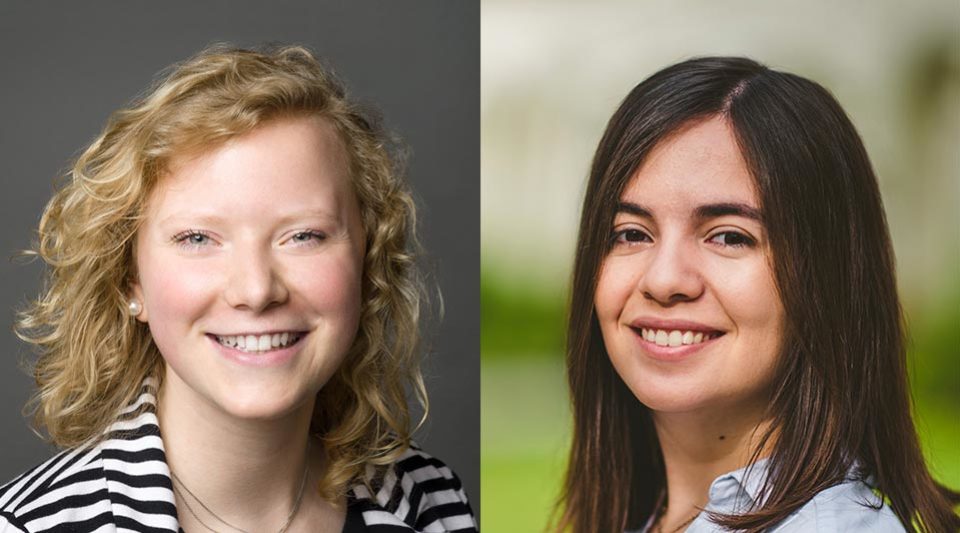Teagan Sweet and Frances Zengotita have received graduate fellowships from the U.S. Department of Energy (DOE) through the Office of Nuclear Energy’s Integrated University Program.
The fellowships support graduate studies, research, and an internship at a DOE National Laboratory or other approved research facility. A total of 31 fellowships were awarded nationwide.
Sweet is pursuing a doctorate in inorganic chemistry in the Department of Chemistry and Biochemistry. A member of the Peter C. Burns Research Group, she studies the use of actinides — the fuel behind the nuclear fuel cycle — working to incorporate them into borosulfate structures to create new materials for nuclear energy. These new materials can be used to separate uranium from fuel, which can then be recycled to produce more energy.
Sweet received her bachelor’s degree in chemistry from St. John’s University in New York City. She served as a research assistant in the Peter Dunne Lab at Trinity College of Dublin, developing new green materials for applications in energy storage, solar power, and drug delivery.
After graduation, she plans to continue her research in nuclear energy at a national laboratory.
Zengotita is pursuing a doctorate in actinide geochemistry in the Department of Civil and Environmental Engineering and Earth Sciences. Her work in the Amy Hixon Group focuses on environmental interactions at the nanoscale between mineral colloids and plutonium. By better understanding the roles different minerals play in plutonium transport, she hopes to enhance performance assessment of deep geological depositories to ensure the safe long-term disposal of nuclear contaminants.
Zengotita received a dual bachelor’s degree in chemistry and English from Florida International University (FIU). She worked as a student researcher for the U.S. Nuclear Regulatory Commission and the Department of Energy Fellowship program. Her undergraduate research at FIU focused on laboratory experiments to update risk assessment models on the behavior of the actinide series under conditions relevant for the Waste Isolation Pilot Plant. She also interned at Lawrence Livermore and Los Alamos national laboratories.
As an environmental scientist, Zengotita hopes to contribute to environmental policies that would help remediate contaminated sites, such as Church Rock, New Mexico. The Church Rock Uranium Mill Spill was the largest release of radioactive material in U.S. history.
— Nina Welding, College of Engineering
